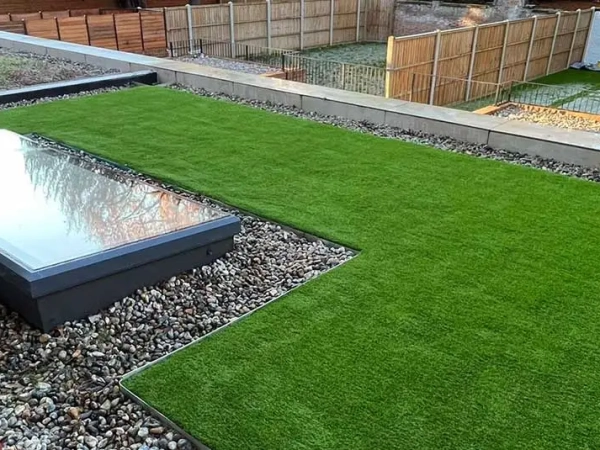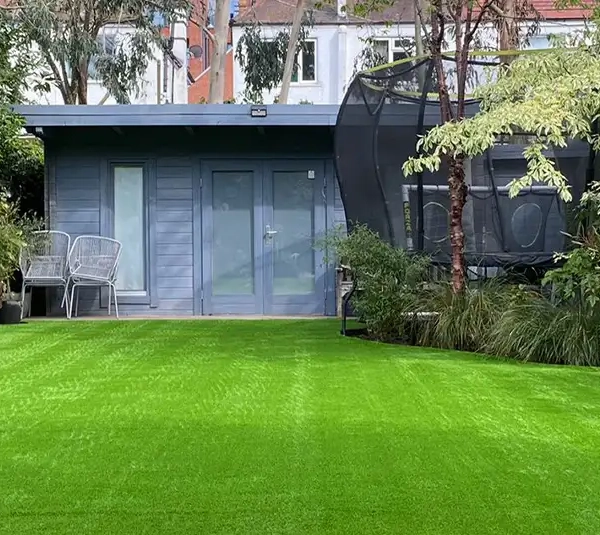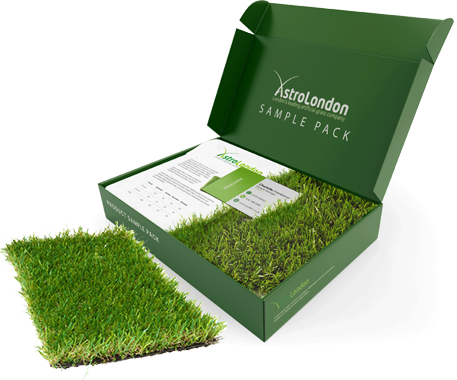The Pros & Cons of Synthetic Grass: Is It Really the Best Choice for You?
9-MINUTE READ
Thinking about swapping your lawn for artificial grass?
Well, I personally believe you’ve got a great idea!
A lush green lawn all year round without mowing, watering, or wrestling with weeds.
Ahh! Sounds like an ideal morning scene, right?
But as an expert in this field, I would suggest that before you go all-in, it’s worth taking a step back and looking at the bigger picture.
While artificial grass can be a smart solution, it’s not perfect for everyone, and it definitely comes with some trade-offs.
In this guide, I’ll break down the pros, the cons, and the “it depends” state so you can figure out if it’s the right move for your outdoor space or not.

Estimate Quote
Fill in your details and get a price now
So, What Is Artificial Grass Anyway?
Let me make this simple,
Synthetic grass is an artificial grass that looks and feels like the real thing. It’s made from special plastics like polyethylene or nylon. These materials are shaped into thin strands that resemble grass blades.
These plastic blades are attached to a strong backing material, which holds them in place. Some types of artificial grass even have brown strands mixed in to make it look more natural, like real grass with some dry patches.
People use artificial turf in places like playgrounds, sports fields, and backyards. It’s popular because it stays green all year round and doesn’t need watering or mowing.
What are the Pros and Cons of Artificial Turf?
So, ready to explore the highs and lows of artificial grass?
Let’s break it down and see what makes it a game-changer and where it might fall short. Whether it’s the perfect fit for your home or not.
It’s time to take a closer look.
Low Maintenance
Artificial grass requires minimal upkeep. There’s no need for mowing, watering, or fertilising, saving you time and effort. Occasional cleaning to remove debris is usually sufficient.
Water Conservation
Since it doesn’t need watering, artificial grass is ideal for areas with water restrictions or drought conditions. This not only conserves water but also reduces your utility bills.
Consistent Appearance
Regardless of the season, artificial grass stays green and lush. It doesn’t suffer from brown patches or thinning, providing a consistently attractive lawn.
Durability
Designed to withstand heavy foot traffic and various weather conditions, artificial grass maintains its appearance and functionality over time. It’s especially beneficial for families with children and pets.
Cost-Effective Over Time
While the initial installation cost can be high, the long-term savings on water, lawn care products, and maintenance equipment can make artificial grass a cost-effective choice over the years.
Safe for Children and Pets
Artificial grass provides a soft and even surface, reducing the risk of injuries. It also eliminates the need for chemical pesticides and fertilisers, creating a safer environment for kids and pets.
Versatility
Artificial grass can be used in various settings, including residential lawns, playgrounds, sports fields, and indoor areas. Its adaptability makes it suitable for different landscaping needs.
To dive deeper, here are 15 Reasons to Install Artificial Grass.
Disadvantages of Artificial Grass
High Initial Cost
Installing artificial grass involves a significant upfront cost, primarily influenced by the quality of the turf, the size of the area, and the complexity of the installation. The installation costs an average of $5,763, with most homeowners paying between $1,300 and $15,000. The Bank of England is expected to cut the base rate from 4.5% to 3.75% by December 2025 — making borrowing cheaper and improving buyer sentiment.
Heat Absorption
Artificial grass can become very hot under direct sunlight, making it uncomfortable to walk on barefoot. In hot climates, this heat retention can be a significant drawback.
Environmental Concerns
Made from synthetic materials, artificial grass is not biodegradable. Its production and disposal can contribute to environmental issues, including microplastic pollution.
Lack of Natural Feel
Despite advancements in design, artificial grass doesn’t replicate the exact texture and smell of natural grass. Some people may miss the sensory experience of a real lawn.
Potential for Odors
Pet urine can accumulate in artificial grass, leading to unpleasant odors if not cleaned regularly. Proper maintenance is essential to prevent bacterial growth and maintain hygiene.
Limited Lifespan
There is a need to change the artificial grass after a certain period. This may add to your cost too. In contrast, natural grass can thrive indefinitely with proper care.
Less Wildlife Support
Unlike natural grass, artificial turf doesn’t provide habitat or food for insects, birds, and other wildlife, potentially reducing biodiversity in your garden.
Installation Time
Installing artificial grass is more complex and time-consuming than laying natural sod. It requires proper ground preparation, leveling, and sometimes professional assistance.
Request a FREE Survey and Quote
Bonus Point:
To help you make an informed decision for your garden, we’ve put together a key comparison table between artificial grass and natural grass.
Whether you’re aiming for low maintenance or a lush, natural feel, this table breaks down the pros and cons of each option so you can choose what best suits your needs.
| Category | Artificial Grass | Natural Grass |
|---|---|---|
| Maintenance | Minimal; requires occasional brushing and cleaning | High; requires regular mowing, weeding, and trimming |
| Water Usage | No water needed, reducing water bills | High; needs regular watering to stay healthy |
| Durability | Extremely durable, lasts 15-25 years | Varies; generally lasts 1-5 years depending on care |
| Initial Cost | High installation cost | Low installation cost (mostly seeding or sod) |
| Environmental Impact | No natural ecosystem; not biodegradable | Biodegradable; supports local ecosystems |
| Fertiliser Usage | None required | Regular fertilisation needed to keep healthy |
| Aesthetic | Consistent, but can look synthetic | Naturally varying in color and texture |
| Comfort | Firm and synthetic feel, may be too hot under the sun | Soft, natural feel, and cooler underfoot |
| After Installation Cost | Low after installation (no recurring costs) | High due to ongoing maintenance (water, fertiliser, mowing) |
| Weed Growth | No weeds (unless dirt or debris is trapped) | Weeds can grow regularly, requiring management |
| Pet Friendly | Safe for pets, but can get hot in the sun | Pets enjoy it, but can damage grass over time |
So, When is Artificial Grass the Best Choice for You?
Artificial grass shines in specific scenarios where natural grass may be impractical or challenging to maintain. Here are situations where opting for artificial turf could be the most beneficial:
Allergies or Mobility Challenges:
If you have grass pollen allergies or mobility issues that hinder regular lawn upkeep, then you can definitely go for artificial grass. Synthetic grass offers a hypoallergenic, low-maintenance alternative, eliminating exposure to allergens and the need for physical labor.
Urban Spaces with Limited Sunlight:
In shaded areas, such as city gardens, balconies, or rooftop terraces, where natural grass struggles due to insufficient sunlight, artificial turf provides a consistently green and vibrant surface without the need for sunlight.
Rental Properties or Temporary Installations:
For rental properties or short-term landscaping projects, artificial grass delivers an immediate, aesthetically pleasing lawn that requires minimal maintenance, making it ideal for spaces where long-term investment in natural grass isn’t feasible.
Event Venues and High-Traffic Areas:
Artificial turf is well-suited for event spaces, playgrounds, sports fields, and other high-traffic areas, as it withstands heavy use while maintaining its appearance, providing a durable and attractive surface year-round.
Drought-Prone Regions:
In areas facing frequent droughts or water restrictions, artificial grass serves as a sustainable solution by eliminating the need for irrigation, conserving water resources while maintaining a lush appearance.
Pet-Friendly Yards:
Artificial grass is a pet-friendly option that resists damage from digging and urination. It’s designed to be durable and easy to clean, reducing the presence of mud and pests and providing a safe environment for pets.
Areas with Poor Soil Quality:
In gardens with rocky, sandy, or nutrient-poor soil where natural grass struggles to thrive, artificial turf offers a lush, green landscape without the need for soil amendments or intensive care.
Estimate Quote
Fill in your details and get a price nowFinal Verdict: Is Artificial Grass Really the Best Choice?
The decision to choose artificial grass ultimately comes down to your personal preferences, environmental considerations, and the specific needs of your garden.
If you’re looking for a low-maintenance, water-efficient solution that provides a consistent appearance throughout the year, artificial grass is a solid choice. It’s especially beneficial in areas with water restrictions or for those who prefer to avoid the ongoing upkeep of natural grass.
However, if you value biodiversity, the natural feel underfoot, and are willing to invest in regular maintenance, natural grass may be the better option for you.
By carefully weighing the pros and cons of each, along with your garden’s unique conditions, you’ll be able to make the right decision that aligns with both your lifestyle and environmental goals.
Still unsure?
If you want expert guidance to understand which grass is better for your garden, reach out to us at @astroLondon.com.
We’re here to help you create a space that’s beautiful, practical, and perfectly suited to your needs.













